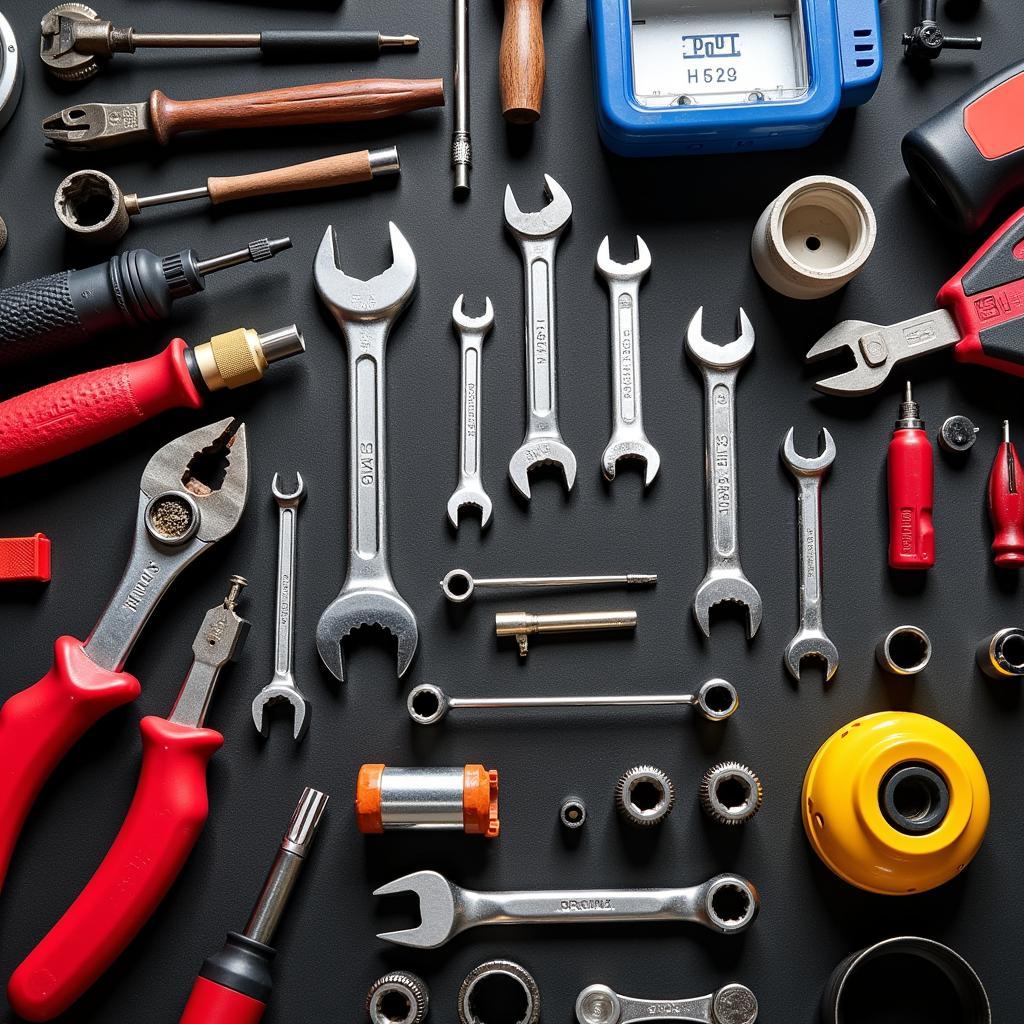Replacing a serpentine belt is a common car maintenance task that many DIYers can tackle. This seemingly simple belt powers essential components like your alternator, power steering pump, and air conditioning compressor. A worn or broken belt can leave you stranded, so understanding how to inspect and replace it is crucial. Let’s dive into the world of DIY car maintenance: serpentine belt edition. Knowing how to perform this task can save you time and money, and give you the satisfaction of working on your own vehicle. After reading this, you’ll be equipped to handle this essential car maintenance task. See our regular scheduled car maintenance guide for more general car maintenance advice.
Why is Serpentine Belt Maintenance Important?
A serpentine belt is a single, continuous belt that drives multiple peripheral devices in your engine. Its condition directly impacts your car’s performance. Neglecting it can lead to costly repairs and inconvenient breakdowns. Regular inspection and timely replacement are key to preventing unexpected issues.
How to Inspect Your Serpentine Belt
Regular inspection is crucial for identifying potential problems. Look for cracks, fraying, glazing, or missing ribs. If you see any of these signs, it’s time for a replacement. You should also check the tension. A loose belt can slip and squeal, while an overly tight one can damage bearings.
 Inspecting a Car’s Serpentine Belt
Inspecting a Car’s Serpentine Belt
Gathering Your Tools and Materials for DIY Serpentine Belt Replacement
Before you begin, gather the necessary tools and materials. You’ll need a new serpentine belt (check your owner’s manual for the correct part number), a set of wrenches or sockets (sizes will vary depending on your vehicle), a belt tensioner tool, and safety glasses. Having everything ready beforehand will make the process smoother and more efficient.
Step-by-Step Guide to Replacing Your Serpentine Belt
- Locate the belt routing diagram: This diagram is usually found on a sticker under the hood or in your owner’s manual. It shows the path the belt takes around the various pulleys.
- Relieve the tension on the belt tensioner: Use the belt tensioner tool to move the tensioner pulley and release the belt.
- Remove the old belt: Carefully slide the belt off the pulleys, following the routing diagram in reverse.
- Install the new belt: Route the new belt around the pulleys, making sure it’s properly aligned. Double-check with the routing diagram.
- Re-tension the belt: Use the belt tensioner tool to apply the correct tension to the new belt.
- Double-check everything: Ensure the belt is seated correctly on all pulleys and that the tension is correct.
- Start the engine and listen for any unusual noises: If you hear any squealing, the belt may be too loose or misaligned.
 Replacing a Serpentine Belt on a Car Engine
Replacing a Serpentine Belt on a Car Engine
Need help determining when to perform other maintenance tasks? Refer to our car maintenance at miles guide.
When to Seek Professional Help
While replacing a serpentine belt is often a DIY-friendly task, there are times when professional help is necessary. If you’re uncomfortable working on your car or encounter unexpected difficulties, don’t hesitate to seek the assistance of a qualified mechanic. Sometimes a seemingly simple job can have underlying complexities.
“A properly maintained serpentine belt is vital for the smooth operation of your vehicle,” says automotive expert, Michael Stevenson. “Regular inspection and timely replacement can prevent costly repairs down the road.”
Preventative Maintenance: Extending the Life of Your Serpentine Belt
Regular maintenance can help extend the life of your serpentine belt. Keeping the engine compartment clean and free of debris can prevent premature wear. Regularly checking the tension and alignment of the belt is also important.
 Checking Car Fluids and Components
Checking Car Fluids and Components
Don’t underestimate the importance of routine checks. Our what to check for car maintenance provides a comprehensive checklist.
Conclusion
DIY car maintenance, specifically replacing a serpentine belt, can be a rewarding experience. By following these steps, you can save money and gain valuable experience. Remember, regular inspection and maintenance are key to keeping your car running smoothly. For more information on car maintenance costs, check out our car maintenance service full cost guide. Don’t hesitate to contact us at AutoTipPro at +1 (641) 206-8880 or visit our office at 500 N St Mary’s St, San Antonio, TX 78205, United States for further assistance with your Diy Car Maintenance Serpentine Belt needs.
“Don’t wait for your serpentine belt to break down,” advises Sarah Miller, a seasoned mechanic. “Regular checks can save you from a lot of trouble in the long run.” Keeping a maintenance schedule, like the one available for the 2005 lincoln town car maintenance schedule, can be extremely beneficial.
 Tools and Equipment for Car Maintenance
Tools and Equipment for Car Maintenance
FAQ
- How often should I replace my serpentine belt? Every 40,000 to 60,000 miles, or as recommended in your owner’s manual.
- What are the signs of a bad serpentine belt? Cracks, fraying, glazing, squealing, or visible wear.
- Can I drive with a bad serpentine belt? No, it can lead to further damage and leave you stranded.
- Is it difficult to replace a serpentine belt myself? It’s a moderately challenging DIY task, but doable with the right tools and guidance.
- How much does it cost to replace a serpentine belt? It can vary, but DIY replacement is significantly cheaper than professional service.
- What tools do I need to replace a serpentine belt? Wrenches or sockets, a belt tensioner tool, and safety glasses.
- Where can I find the serpentine belt routing diagram? Usually on a sticker under the hood or in your owner’s manual.





Leave a Reply